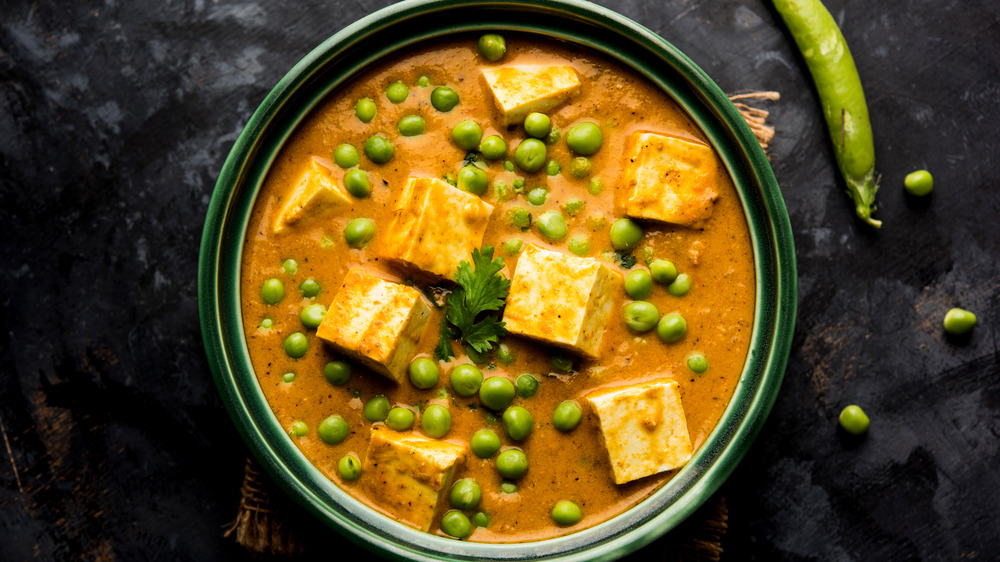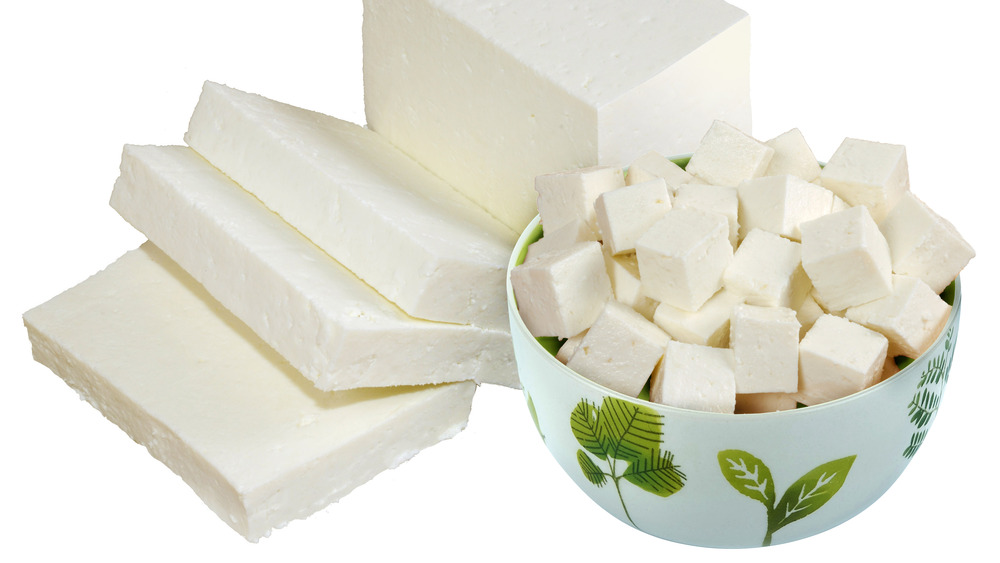How Is Paneer Different From Other Cheese?
Imagine adding milky chunks of cheese to your hot soup and discovering that the cubes don't melt. With each spoonful, you can enjoy the taste and textural sensation of creamy soup and firm cheese. Welcome to the world of paneer.
The word paneer comes from "peynir" or "cheese" in Turkish and Persian, and it's thought to date back to the sixteenth century, when Persian and Afghan rulers introduced the cheese to Northern India (via Marigold Maison).
Paneer may translate to cheese, but when compared to its other dairy-based brethren, it's actually pretty different. The Washington Post explains that traditional cheese is made when a "starter culture" of bacteria turns the lactose in milk to lactic acid. Then, rennet is added to curdle the milk and separate the casein from the whey. The whey is poured off cheese is molded and aged for different periods of time (depending on what type it is).
Paneer is also made from milk, but there's no addition of bacteria or rennet, and there's no aging required (via Marigold Maison). MyRecipes states that making paneer consists of using an acid like lemon juice or vinegar to separate the curds from the whey in hot milk. Plus, you can eat it hot off the press, since aging isn't part of the process.
What can you do with paneer?
The question should be, "What can't you do?" Kitchn describes paneer as a mild, milky cheese and compares it to Mexican queso fresco and Italian ricotta). It's a perfect component in things like curries and saag paneer, a traditional Indian dish of seasoned, creamed mustard greens (or spinach) with pan-seared cubes of paneer (via Saveur). Feasting at Home agrees and adds that "soft and pillowy" cubes of fresh paneer partner perfectly with the intense flavors of Indian curries, stews, masala, and wraps.
Foods Guy adds that because paneer doesn't melt, it's wildly versatile and can be stuffed into samosas or chopped and added to sautéed onions and vegetables to create a hearty vegetarian meal. If you want to add this to your meals but aren't set on making your own, Sukhi's suggests visiting an Indian grocer, your local Aldi store, or Amazon. That said, Healthy Nibbles and Bits asserts that homemade paneer is better, boasting more texture from the curds (similar to tofu), while the store-bought variety is smooth and elastic, like mozzarella.
Indian Healthy Recipes shares three different ways to make the cheese: One with yogurt, which imparts a subtle yogurt flavor; a version with vinegar, which speeds up the process; and a variation with lemon, which helps impart the much-loved grainy texture.

